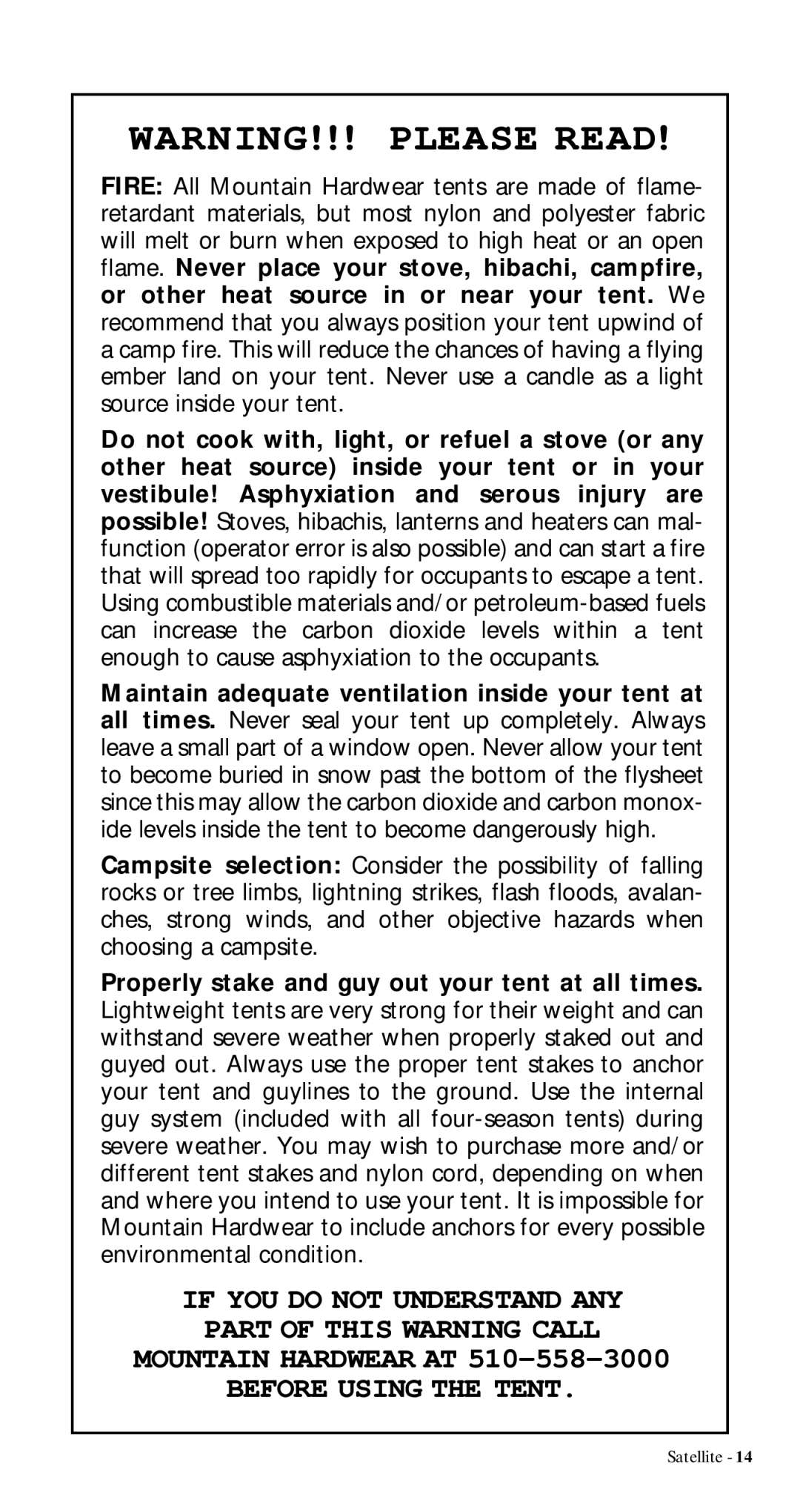
WARNING!!! PLEASE READ!
FIRE: All Mountain Hardwear tents are made of flame- retardant materials, but most nylon and polyester fabric will melt or burn when exposed to high heat or an open flame. Never place your stove, hibachi, campfire, or other heat source in or near your tent. We recommend that you always position your tent upwind of a camp fire. This will reduce the chances of having a flying ember land on your tent. Never use a candle as a light source inside your tent.
Do not cook with, light, or refuel a stove (or any other heat source) inside your tent or in your vestibule! Asphyxiation and serous injury are possible! Stoves, hibachis, lanterns and heaters can mal- function (operator error is also possible) and can start a fire that will spread too rapidly for occupants to escape a tent. Using combustible materials and/or
Maintain adequate ventilation inside your tent at all times. Never seal your tent up completely. Always leave a small part of a window open. Never allow your tent to become buried in snow past the bottom of the flysheet since this may allow the carbon dioxide and carbon monox- ide levels inside the tent to become dangerously high.
Campsite selection: Consider the possibility of falling rocks or tree limbs, lightning strikes, flash floods, avalan- ches, strong winds, and other objective hazards when choosing a campsite.
Properly stake and guy out your tent at all times. Lightweight tents are very strong for their weight and can withstand severe weather when properly staked out and guyed out. Always use the proper tent stakes to anchor your tent and guylines to the ground. Use the internal guy system (included with all
IF YOU DO NOT UNDERSTAND ANY
PART OF THIS WARNING CALL
MOUNTAIN HARDWEAR AT
BEFORE USING THE TENT.
